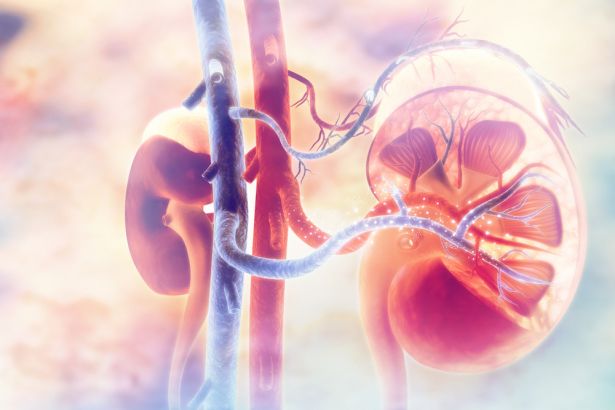
What is being tested?
Cystatin C is a small protein that is produced by nucleated cells (those with chromosomes and genetic material at their centre, which is most of the body's cells). It is produced at a constant rate and is found in a variety of body fluids such as serum, spinal fluid and breast milk.
Cystatin C is filtered out of the blood by the glomerulus - tiny blood vessels in the kidneys that allow water and dissolved substances and wastes to pass through their walls while retaining blood cells and larger proteins. What passes through the glomerulus forms a filtrate fluid. The rate at which this fluid is formed is called the glomerular filtration rate (GFR). The kidney reabsorbs Cystatin C, glucose and many other substances from the filtrate, while allowing waste products to be carried with the fluid to the bladder and eventually out of the body as urine.
All the reabsorbed cystatin C is completely broken down and none reappears in the blood so this makes it very useful for measuring the glomerular filtration rate.
How is it used?
Cystatin C may be used as an alternative to creatinine and creatinine clearance to screen for and monitor kidney dysfunction in those with known or suspected kidney diseases. It may be especially useful in detecting early decreases in kidney function (as measured by eGFR) and in those for which creatinine measurement is a problem: for instance in those who have liver cirrhosis, are very obese, malnourished or have a very small muscle mass (creatinine is produced in the muscles). It may also have a role along with other tests, such as urine albumin/creatinine ratio (UACR) to monitor kidney function over time in those with diseases such as diabetes.
Researchers are exploring other uses of cystatin C, and the reasons for doctors requesting it may change over time. In addition to kidney dysfunction, it has been associated with an increased risk of cardiovascular disease and heart failure in older adults. While there are growing data and literature supporting the use of cystatin C, there is still a degree of uncertainty about when and how it should be used.
When is it requested?
When available, cystatin C may be requested when you have a known or suspected disease that affects or potentially affects kidney function and GFR. Your doctor requests cystatin C to check for early kidney dysfunction and/or to monitor known impairment over time. It may be requested by itself or be done along with other tests such as urine albumin/creatinine ratio (UACR).
Early kidney impairment may not cause elevated creatinine levels or symptoms. If your doctor is not satisfied with your creatinine clearance test or feels that your GFR would be better estimated by another test, cystatin C may prove to be a useful alternative.
What does the result mean?
An elevated serum cystatin C indicates a low GFR and kidney dysfunction. Since cystatin C is produced throughout the body at a constant rate and removed by glomerular filtration (and subsequently broken down in another part of the kidney), it should remain at a steady state in the blood if the kidneys are working efficiently and the GFR is normal.
Cystatin C levels are not affected by muscle mass and age like creatinine but can be affected by other factors in some patients. In Australia, the cystatin C test is rarely used because it is expensive to perform. Instead the eGFR test is widely used. This is a calculation that compensates for the effects of age and muscle mass on serum creatinine levels.
Is there anything else I should know?
Currently cystatin C is not routinely available in Australia.
Common questions
No. Unlike creatinine, cystatin C is reabsorbed from the filtered urine whilst still inside the kidney and then broken down (metabolised) in the kidney. Under normal conditions, cystatin C is not found in detectable levels in excreted urine.
Researchers are exploring other uses of cystatin C and the reasons for doctors requesting it may evolve over time.
More information
Pathology Tests Explained (PTEx) is a not-for profit group managed by a consortium of Australasian medical and scientific organisations.
With up-to-date, evidence-based information about pathology tests it is a leading trusted sources for consumers.
Information is prepared and reviewed by practising pathologists and scientists and is entirely free of any commercial influence.